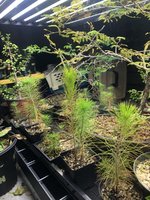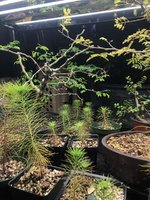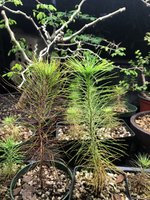parhamr
Omono
The right amount of UV can help reduce latent fungal and bacterial loads. If it is applied to tropical trees, for example, they are more likely to retain their UV hardiness and experience a better transition out of winter storage to spring outdoor exposure.I don’t get it. Why would you use UV lights at all for plants, regardless of season? It’s the wrong wavelength for photosynthesis, AFAIK. Likely to just do damage to the eyes of the human being entering the area to water trees, if they’re not careful about turning the UV lamps off prior to approaching, and maybe also cause some leaf burn if it’s too intense.
Every year I’ve started fruit and vegetable seedlings indoors I’ve had quite a song and dance in gradually exposing them to UV. For other gardeners this shuffle and anxiety should be pretty apparent



